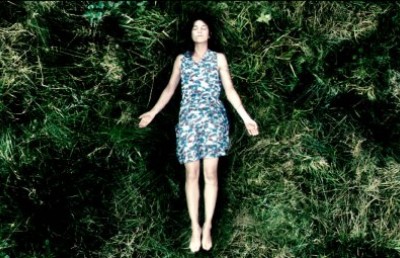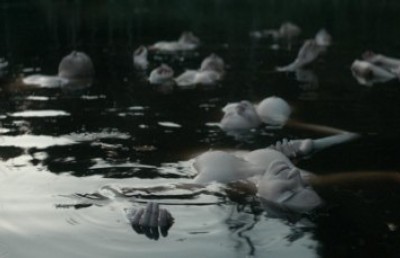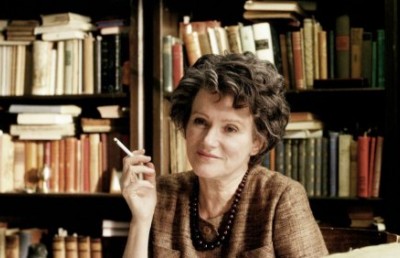Towards a Recasting of Forms: The Cinematic Experience of/in Epic Theatre in Sokurov’s Alexandra and Tarr’s The Turin Horse
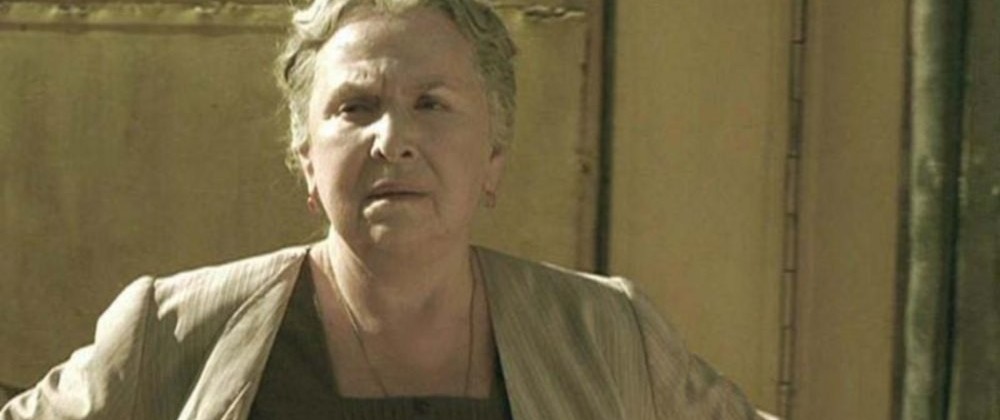
In his essay “The Author as Producer,” the Marxist cultural theorist Walter Benjamin distinguishes between theatre that competes against film and radio in its propagation of aesthetic “pleasure” that further entrenches the subject in his disempowerment in capitalism, and epic theatre that has amalgamated some of the impulses of film to “present” reality in a different form, which is in essence a defamiliarization of the conditions of existence:
Not so that of a theatre that, instead of competing with newer instruments of publication, seeks to use and learn from them, in short, to enter into debate with them. This debate the epic theatre has made its own affair. It is, measured by the present development of film and radio, the contemporary form. (234)
If epic theatre is a “contemporary form,” this is because it has incorporated the principle of interruption into its functioning, a principle which Benjamin asserts is manifested in cinema’s use of the montage. In its juxtaposition of images and image sequences against one another, a new configuration of reality is produced which disrupts any easy absorption and identification with the characters and situation they are in. Benjamin locates the dramatic equivalents of cinematic montage in the songs, gestures and stage directions employed by Brecht in his plays which constantly wrench the audience away from the “reality” which is presented, and towards an understanding of how that “reality” is produced, which in the last analysis is always linked to social and material conditions of production. This is why, as Benjamin points out, epic theatre dispenses with the well-made Aristotelian dramatic plot of beginnings, middles and ends, and focuses our attention on situations, exposing man and his relationships to his environment, society, and with other men. In this way, epic theatre “alienates” us from the “reality” presented on the stage in order for us to reconsider the very structures of this “reality” itself. A sustained examination into the situations which constitute our existence renders these situations questionable, as it is only when our sense of life is distorted that we begin to consider it critically and with an eye towards transforming our attitudes towards it.
Benjamin’s essay is of interest to the extent in which he sees the revolutionary potential of art in its renewed relationship to form. Artists must not be content to work simply in the forms and genres handed down to them by tradition, as these forms have been determined and circumscribed by capitalism and the bourgeois stranglehold over artistic tastes and standards. Instead, the revolutionary moment comes about when the artist becomes a producer of a renewed form, thereby ascribing to his work(s) an “organizing function” (233) that orients his concerns towards questioning the status quo and the class struggle. Benjamin sees this renewal in terms of a “recasting” of forms which “not only affects the conventional distinction between genres . . . but also revises even the distinction between author and reader.” (225) Just as epic theatre articulates the cinematic principle of montage based on a common impetus of interruption, I argue that cinema has absorbed some of the energies of epic theatre in its (re)presentations of situations which constitute ruptures and distortions in the fabric of reality. However, I wish to move past Benjamin’s limited focus on montage, to consider what a film expresses through the world that it creates. I draw on Mikel Dufrenne’s distinction between the real world and the expressed world that the work of art creates, which is similar but ontologically distinct from it. It is by means of the coordinates of this expressed world that the artist prompts us to discover the conditions of existence and the type of society which constitutes such conditions. If epic theatre distances its audience from the situations it presents through its interruptions which turn the audience’s critical faculties towards these situations, film simultaneously evokes our visual sense of the world while also indicating its dislocation from it, enabling us to consider how the world might be different if our positions towards it change. Through an analysis of crucial moments in Alexander Sokurov’s Alexandra (2007) and Bela Tarr’s The Turin Horse (2011), I argue that that the revolutionary impulse that Benjamin located in epic theatre because it is cinematic can be found in cinema to the extent that it is theatrical in an epic sense.
The Expressive Function of the Work of Art
The philosopher Mikel Dufrenne argues that the phenomenological approach to the work of art should start with the world that the aesthetic object expresses. Dufrenne distinguishes between the represented world (the world of objective space and time) and the expressed world in order to emphasize how the artist organizes elements in the work of art so that it communicates meaning. In order to express the various levels of signification, “the aesthetic object is able to be the source of its own time and space.” (161) The work of art creates the conditions for its unique form of expression; its coordinates allow meaning to emerge. Dufrenne highlights how the work of art opens up a world which need not be, as Plato argues, a deficient copy of the objective world. Instead, the aesthetic object absorbs the material of the objective world and (re)presents it, giving “a new countenance” (165) to objects and people.
Influenced by existentialist phenomenology, Dufrenne argues that the aesthetic object uncovers not isolated objects and characters, but a totality and unity in which subject and object interpenetrate and illuminate each other with significance. In other words, the work of art presents man in a particular life-situation with which he is concerned about. Aligning Dufrenne’s aesthetic phenomenology with Benjamin’s ideas on epic theatre allows us to see how the expressive value of a work of art potentially functions as an interruption to our ordinary understanding of social reality. The aesthetic object recreates the represented world, allowing us to perceive this world in a different light. Meaning thus arises in the disjuncture between social life and its aesthetic expression, turning our attention towards the fundamental coordinates of the situation that is presented to us.
Character as Interruption: Sokurov’s Alexandra and the “Reality” of War
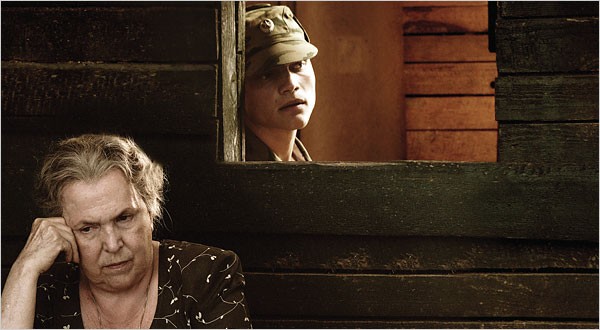
Sokurov’s war film Alexandra presents the viewer with such moments of radical disjuncture and interruption, as embodied in the figure of Alexandra. In the film, Alexandra journeys to a remote military base to visit her grandson Denis, who is an unmarried officer wielding authority over his troops. The opening shots show men helping Alexandra onto a military train which will take her to the base. As the soldiers are helping her onto the train, they try to impress her with military jargon, proclaiming that the train is armoured. Alexandra pays no attention; she has no use for rhetoric through which men try to establish a sense of authority. As the camera shifts to the interior of the train, Alexandra is seen walking past the soldiers who are, like her, returning to the military base. As she looks at each of them individually, Sokurov pulls in to scrutinize their expressions as they return her look, and the viewer is struck by their sudden vulnerability and nakedness when confronted by the alterity of the feminine gaze. Alexandra’s presence thus constitutes an absolute interruption or break with their absorption in the soul-numbing nature of military routine, exposing the tenuous fragility of masculinity and its lack of life-affirming nurturance which will be, to a certain extent, fulfilled in Alexandra when she starts to interact with soldiers at the base. Unnerved by her presence on the train, the men start to show cracks beneath their indifferent exterior, and Alexandra demonstrates an uncanny sensitivity to this when she goes up to a soldier and encourages him to keep up his morale.
In the dark and cramped interior of the train and in the tank with which sits at the base, Sokurov sets up the coordinates of the world that is about to be introduced to her and to us: claustrophobic, oppressive and deadening. Indeed, the world of the military base is presented to us as a place filled with dust and an attendant sense of futility, a place where life has been reduced to the carrying out of routines and the satisfaction of base needs. Alexandra’s introduction to this world is accompanied by a sense of bewilderment on her part, as she cannot comprehend why people would choose to live this way. In an important sequence, Denis accompanies Alexandra around the base. Despite her grandson’s efforts to take her to see “something interesting,” she stops to observe a few young soldiers cleaning rifles. The camera focuses our attention on the efficiency of this process. We see the cleaning oil being poured and used, the parts being dismantled and put back together, and hear the snaps and clicks of the parts as they are stripped and fitted. Throughout this exercise, the human actor is abstracted from the process; what Sokurov presents to us is a series of mechanical movements, all in the service of military precision. However, Alexandra almost intrudes on this scene by asking an extremely pointed question to one of the soldiers: “How old are you?” The question, with all its intended resonances, disrupts his absorption into his task, and forces him to confront the issue of his youth and the purpose of his life in such a state. Indeed, with her question, Alexandra urges the soldiers, and the viewers, to consider how war dehumanizes people by stripping them of higher sensibilities. She emphasizes this point later on during her talk with the unit commander, where she says that they only know how to “destroy” and not to “rebuild.” Implicit in this statement is her worry that all that Denis knows how to do is to “shoot,” and that after his discharge from the military, he will not have it in him to survive in the outside world. In this male-dominated military hierarchy, Alexandra’s feminine presence thus functions as an absolute alterity that intrudes upon this world, questioning and exposing the codes through which members of the military function. In terms of the argument I have set up, Alexandra literally interrupts the sense of routine and order in camp life, transgressing the formal and informal boundaries which undergird the structure of the soldiers’ lives. Because of this, she is seen as someone whose presence and movements must be managed. After a night in which she wanders out of her quarters and talks to sentries on duty, a soldier is assigned to take care of her and monitor her.
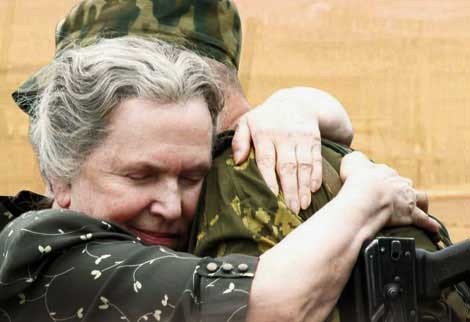
Alexandra’s role as a disquieting presence that disrupts the orderliness of military life, which is also indexed by her otherness, receives its clearest indication in one of the film’s crucial moments. She has asked Denis to show her the inside of a tank. As they crawl inside, the viewer senses Alexandra’s discomfort in contorting her body to fit inside its confines. Sokurov once again emphasizes the suffocating atmosphere within this unnatural space by using close-ups which highlight Alexandra’s strained features. Framed in this way, we are struck by the unforgiving nature of the metallic structure of the tank and how it forces the human form to bend to its inhuman will. By focusing our attention on the fragile and vulnerable human body, Sokurov exposes the cruel machinery of war through our visual sense of the absurdity of the situation involving an old woman trying to master war apparatuses. In Benjamin’s sense, this situation is produced by the film as an interruption that arrests our attention because it disrupts our sense of the context in which we associate human mastery and technological dominance. As if to make the point clearer, Alexandra next handles her grandson’s rifle, holding it up and pretending to take aim and pull the trigger. Sokurov here uncovers masculine violence and aggression sublimated as military expertise through the incongruity of Alexandra “firing” the rifle. Alexandra’s presence as an outsider learning about military life allows us to understand the human cost of war, as Sokurov implies that these instruments of violence and death could be turned against the members of society they were ostensibly constructed to protect. In this way, the expressive value of Sokurov’s film is figured as a collision between the world of Alexandra and her grandson, which is also a collision between male and female realities. What starts ostensibly as a way Denis can showcase his side’s military prowess to Alexandra ends up as an exposure of the inhumane bases of that power. Just as, according to Benjamin, epic theatre calls for an audience who will not be completely absorbed in theatrical illusion, Sokurov’s film jolts us from any easy identification with Alexandra and her grandson, asking us to question the political and ethical dimensions of warfare.
Sokurov concretizes these ideas through charting the change in the relationship between Alexandra and Denis during the course of the film. After she has seen the interior of the tank, Denis helps her out of it and carries her in his arms towards her quarters, an image that explicitly recalls Sokurov’s earlier film Mother and Son (1997), signaling the ineffable and spiritual bond between the older and younger generation which can potentially revitalize both of them. The psychological cost of war on Denis is demonstrated when Alexandra finds out that he has gotten into a fight with one of his men because he was not behaving properly. Alexandra’s deepest fears are realized here when she understands that her grandson has been reduced to a person who lives and dies by pure instinct alone, without any regard to consequences. As with both Mother and Son and Father and Son (2003), Sokurov locates the heart of the human drama in the intense and personal interaction between Alexandra and Denis, which is also a stripping away of the psychological barriers of the characters towards an authentic revelation of their souls. Denis confesses that the military regime provides him with a sense of purpose which helps him cope with the meaninglessness of his life and his need to feel human emotion. In this moment, the entire edifice of Denis’ personality and military achievements is exposed to be little more than a compensation for his lack of psychological and spiritual fulfillment. Alexandra too reveals her fear of death and her own vulnerability and desire for human connection. Confronted by their brokenness and need for each other’s love, Denis braids Alexandra’s hair, conveying his care for her and assurance of his soothing presence. The feminine nature of Denis’ braiding stands in almost shocking contrast to his brutal assault of the soldier, emphasizing a more humane side to his character through an embracing of vulnerability and openness towards the needs of others. Alexandra’s presence has had a transformative influence on her grandson, enabling him the perspective to re-evaluate the choices he has made in his life and allowing him to at least reconsider a different mode of life. Once again, Sokurov dramatizes Alexandra as a character who disrupts Denis’ comfortable image of himself and his world, enabling him to question the implications of his actions and his way of life. Along with Brecht, Sokurov’s film emphasizes that a reconceptualization of our personal and social lives is possible only through such interruptions in our conceptual frameworks, as such interruptions serve to defamiliarize the familiar, and bring out what is strange and uncomfortable in that familiarity.
Daily Life as Rupture: Bela Tarr’s The Turin Horse
Whereas Sokurov employs a character who carries the symbolic import of interruption, Tarr’s dismal The Turin Horse (2011) employs its mise-en-scène to evoke a world which, in its very essence, ruptures our understanding of everyday life and the minimal conditions of existence. The film opens with an unnamed narrator telling the viewer an anecdote about the philosopher Friedrich Nietzsche and his encounter with a horse which is being mercilessly beaten by its owner. Nietzsche throws his arms around the horse and weeps for it, stopping the beating in the process. In the narrator’s anecdote, this event figures as the turning point in Nietzsche’s life, as he sinks into madness shortly before dying. Tarr’s opening shot is a close-up frontal shot of a horse’s head as it is being driven by its owner. In a fluid long take, the camera glides from the front of the horse, to its side where we see the wagon on which its owner is sitting on, to the ground level where its hooves kick up the dust and grime which will permeate the landscape of the film. In its elliptical and enigmatic linkage between the horse in the story involving Nietzsche and the horse of the film, Tarr invites the viewer to contemplate a world in which living beings mutely suffer and bear the burden of existence in absolute passivity. Indeed, this is the only time in the film where the horse is moving; elsewhere, it refuses to eat and move, as if being aware that it makes no point to do anything in a world where the daily toil and sweat of work are the only things which stand against beings and the abyss, a world in which there is no escape from the absurdity of existence.
The Turin Horse focuses on two characters that live and work in a barren wasteland. The film chronicles five days in their lives, with the stark inter-titles bearing the words “The first day” all the way to “The sixth day,” in a bleak allusion to the biblical notion of Creation. The film, however, inexorably proceeds in the opposite direction, relentlessly stripping away the conditions of their existence, as evidenced both by the refusal of their horse to eat and the drying up of the water in their well, their only source of water. Tarr dispenses with any establishing shot to orientate the viewer as to the geographical locale of their dwellings; the true space of the film is the claustrophobic interior of their house and the grind of their everyday routines which keep ultimate despair tentatively at bay. Tarr’s world is a world of bleak black-and-white photography, a world where the threat of ultimate dissolution and annihilation opens up a void of meaninglessness and nihilism, its ultimate symbol being the apocalyptic gale which continues to blow outside their house.

Dufrenne’s notion of the work as being able to set up the conditions of its being by being able to ground its own expressed sense of space and time is demonstrated by Tarr, as space and time literally contracts to the phenomenological reality of the four walls of their house and the time spent in it. The narrative portrays the soul-numbing routine of the daily lives of the old man and his daughter, without any hope of renewal or transcendence. The day’s activities are encapsulated in a few simple tasks: fetching water from the well, putting on clothes for the old man because his right hand is incapacitated, boiling potatoes for dinner. Tarr’s camera allows the viewer to experience the weight of their mundane actions; as the old man is peeling the potatoes by hand, we note every uncomfortable twitch of the fingers and palms as they peel away the skin, shrinking away from the heat and feeling the strain of their activity. Brecht states that epic theatre should be a theatre of gestures, as when everyday life is interrupted to expose the social structures which underlie this experience, the gesture stands out as that which becomes questionable in its essence. Read in this light, Tarr’s film explicitly focuses the viewer’s attention on the gestures that define and delimit the characters’ horizons. In such a world of gestures, communication becomes unnecessary. The daughter speaks only to tell the old man “It’s ready” when the potatoes are boiled, and the old man’s only words to her is to get ready to sleep. The daily repetition of these tasks crystallizes the heaviness of existence which oppresses them, but which offers them no other solution than to continue carrying on with life. The very lives of the characters, lived in the world of the film, constitute the interruption which turns our attention to the very significance of this mode of existence. Tarr neglects to give any information about his characters other than the fact that they are completely defined by their way of life; his unsentimental treatment of his characters precludes any empathy with them, which is similar to the effect that epic theatre has on the audience. As Benjamin emphasizes, “instead of identifying with the characters, the audience should be . . . astonished at the circumstances under which they function.”(“What is Epic Theatre?”150) Indeed, this astonishment is only half-realized by the daughter, as she asks her father “What’s it all about” before going to sleep. The old man’s answer, however, is only a hesitant “I don’t know.” No answer can hold up against the gale which destroys all attempts to transcend the tragic banality of their existence.
Trapped in this way of living, the only respite these characters have is to sit at the window and look outside, betraying both a desperate longing for a different mode of existence and a failure to conceptualize what this new mode might actually be. As in Tarr’s earlier Sátántangó (1994), the possibility of hope and renewal lies beyond the grasp of characters staring passively at the outside world, mired as they are in the squalidness of their lives. The window frame thus separates the knowable from the unknowable; to venture outside would constitute a radical break in their experience. To be sure, the chance for escape presents itself to the daughter in grotesque fashion through the arrival of a band of gypsies who plan to pillage their water supply. When she goes out to stop them from doing so, they entice her to follow them to America. While nothing more than illusory, the lure of an exotic locale promises the possibility of a form of transcendence symbolically similar to the role of Australia in Michael Haneke’s The Seventh Continent (1989), which she ultimately rejects. However, with the mysterious drying up of their water supply, the old man and the daughter prepare to move with their horse. As they pathetically drag their effects along with their horse, Tarr’s camera frames them on the top of a hill in an extreme long shot which emphasizes their utter insignificance compared to the unforgiving landscape. Recalling Ingmar Bergman’s famous last shot in The Seventh Seal (1957), they move on top of the hill, being led on inexorably by the blind will to survive. Escape is, however, cruelly denied them. After disappearing from sight, they inexplicably return and go back to their house, unloading all the things they have loaded onto their wagon. Their lives resume and their meaningless routines continue; there is only the weak repetition of the daughter’s question “What’s it all about?” resounding this time with a sense of utter futility. Their entrapment is as much physical as it is metaphysical; Tarr returns his characters to the brute facticity of their existence. It becomes abundantly clear by the end of the film that this existence has become deeply questionable and problematic in its essence, but it is also the only way of life these characters know. Faced with the absurdity in continuing to live life the way they have, the daughter realizes that there is no foundation to their existence. The final shot shows both characters at the table staring at the potatoes they are planning on eating. Just like their horse, they understand that it makes no difference to anyone, or even to themselves, whether they eat or not. The film leaves them with the abyss gaping at them, their lives a slow and inevitable decline towards final annihilation.
Similar to epic theatre, Tarr’s film eschews plot development, focusing instead on uncovering “the conditions of life” (Benjamin, “What is Epic Theatre?” 150) which give rise to the situations depicted. By choosing as his subjects abject characters that live on the edge of madness and despair, Tarr presents us with a world in which there is no inherent reason why they should continue living the way they are. Every gesture and action becomes questionable in an existence devoid of significance, but weighty with sheer materiality. In Heidegger’s terminology, the work of art enables us to encounter the thing-like essence of things in the world, which then allows an unveiling of the phenomenological structures of existence which always shows man and his relationships with other beings in the world. In an analogous way, Tarr makes us question our own existence and the value of our actions when all frivolous artifice is stripped away and we are faced with the bare facts and questions of life. The film also prompts us to question, as epic theatre does, the political and social conditions which could have led to the characters living the way they do. The viewer’s attention is taken away from the development of plot and character, of which there is none in the film, and is directed towards the structures of the expressed world that the film evokes, which is always in the mode of a questioning. This questioning can only take place because the world of the film disrupts our sense of the value and purpose of human existence, (re)presenting it as something which potentially can be stripped of all foundation. The Turin Horse, like epic theatre, exposes man, who for Benjamin is “a reduced man . . . chilled in a chilly environment” (235), which in the last analysis is man who is brutalized by his society. By directing our attention towards the actions of characters, both Brecht and Tarr imply that “events are alterable . . . only in their strictly habitual course” (Benjamin, 235-6). Transformation is only possible by altering the structures of personal and social experience, something that revolutionary art must perform and present.
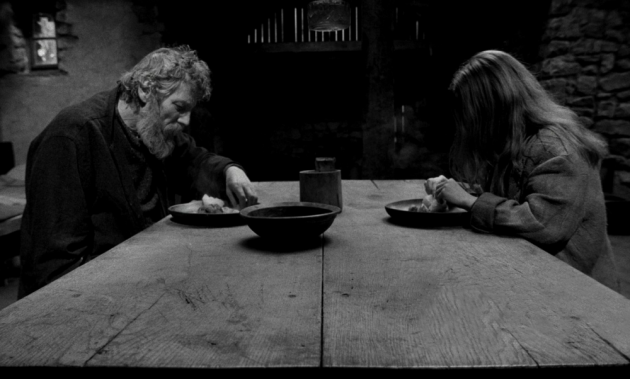
The Revolutionary Moment in Art: The Expressive Value of the Image
In this essay, I have attempted to probe the connection between film and epic theatre, taking my guide from Benjamin’s argument that the only way for an artist to become a producer of new literary and social configurations is to enter into dialogue with other artistic forms. Benjamin locates the revolutionary impulse in epic theatre through its disassociation with the formalistic requirements of tragic and naturalistic theatre, and its incorporation of certain techniques employed in film and radio. However, Benjamin’s focus in his essay is largely on epic theatre, only invoking the procedure of montage in film in the course of explicating the principle of interruption which he finds to be crucial in epic theatre’s effects. I have tried to flesh out Benjamin’s linkage of film and epic theatre through a focus on film and by interpreting his idea of interruption as disruption of the viewer’s understanding of social reality. Employing Dufrenne’s phenomenological distinction between the represented world of the artwork and the world that the artwork expresses allows us a clearer understanding of how the expressed world of the artwork can function as this disruption of our cognizance of the represented world, or the world constituted by social and political rhetoric.
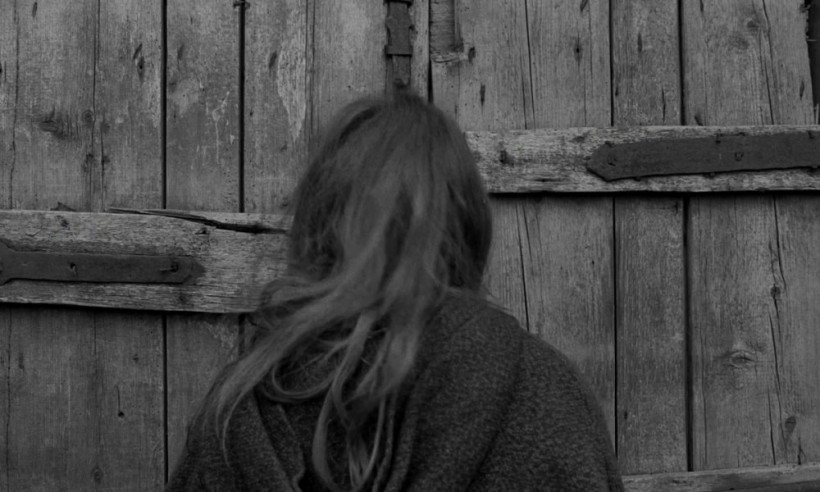
Bibliography
Benjamin, Walter. “The Author as Producer” in Reflections. Trans. Edmund Jephcott. Ed. Peter Demetz. New York: Schocken Books, 220-238.
______. “What is Epic Theatre?” in Illuminations. Trans. Harry Zohn. Ed. Hannah Arendt. New York: Schocken Books, 147-154.
Dufrenne, Mikel. “The World of the Aesthetic Object” in The Continental Aesthetics Reader. Trans. Edward S. Casey et al. Ed. Clive Cazeaux. London: Routledge, 153-169.



